Surgery STAT: How to perform a standing enucleation in horses
Under the right circumstances, you can skip general anesthesia and remove a neoplastic, traumatized or severely infected eye right in the field.
Enucleation, or removal of the globe and all glandular tissue (conjunctiva, nictitating membrane and lacrimal gland), is typically performed under general anesthesia in horses. Enucleation is most commonly performed in cases of neoplasia, severe trauma or infection that cannot be managed medically. Two techniques, either subconjunctival or transpalpebral, can be used to remove the ocular tissues.
The standing enucleation described here follows the transpalpebral approach and is easily performed with the help of a single assistant and standard equipment, making it suitable for use in both the field and referral settings. This procedure can avoid the potential expense and risk of general anesthesia. However, for a successful surgical outcome, proper patient selection, sedation and application of local anesthesia are essential.
Instrumentation needed
- Sedation for a 30- to 45-minute procedure
- Clippers
- Surgical scrub
- 2% mepivacaine hydrochloride
- Assorted needles and syringes
- A 20-ga 3.5-in spinal needle
- A No. 10 scalpel blade on a handle
- Mayo scissors, plus Metzenbaum scissors if desired
- Thumb forceps
- Needle holders
- Sterile gauze sponges
- Suture
- Bandage material (sterile sponges, brown gauze, elastic adhesive bandage
Patient preparation
Move the horse to stocks or place it in a clean stall. Sedate the horse so that the duration of sedation is approximately 30 to 45 minutes. Clip the hair around the affected eye and prep the area with a dilute solution of povidone-iodine and sterile saline solution. Administer a preoperative dose of a nonsteroidal anti-inflammatory drug and broad-spectrum antimicrobial.
Local anesthesia
Anesthesia is performed using 2% mepivacaine hydrochloride. Precise administration of local blocks is critical for the patient's comfort as well as surgical success and should be performed in the following order:
Auriculopalpebral block: 2 ml of anesthetic over the palpable nerve dorsal to the zygomatic arch
Frontal block: 2 to 4 ml of anesthetic at the supraorbital foramen
Subcutaneous palpebral ring block: 10 ml anesthetic in a subcutaneous line block circumferentially around the eyelids (Figure 1)
Four-point retrobulbar block: 10 to 15 ml of anesthetic for each of the four blocks. Use a 20-ga, 3.5-in spinal needle (pre-bent into a curve at the 12, 3, 6, and 9 o'clock positions), advancing it along the bony orbit, outside the orbital sac to reach the caudal portion of the orbit (Figure 2). Deposit 5 to 10 ml of anesthetic at the depth of the needle and the remaining 5 ml as the needle is withdrawn.
Note: Performing the retrobulbar block should give the horse a mild exophthalmos and may take 15 minutes to take full effect.
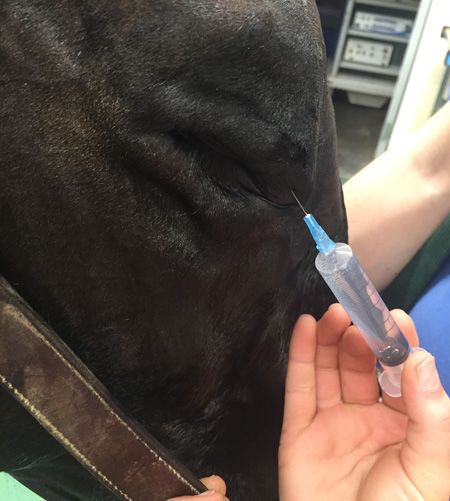
Figure 1. Performing the subcutaneous palpebral ring block. (Photo courtesy of Dr. Nikki Scherrer, Unversity of Pennsylvania, New Bolton Center, Kennett Square, Pennsylvania.)
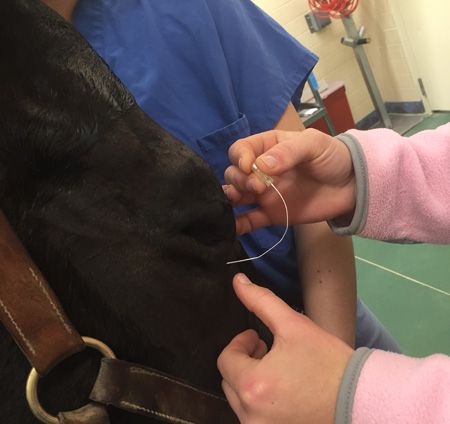
Figure 2. A spinal needle pre-bent to perform the four-point retrobulbar block. (Photo courtesy of Dr. Nikki Scherrer, Unversity of Pennsylvania, New Bolton Center, Kennett Square, Pennsylvania.)
Surgical procedure
After the local anesthetics have taken effect, suture the eyelids closed using 2-0 suture in a simple continuous pattern. If desired, a final surgical prep can be performed at this point.
Make an elliptical incision using a No. 10 scalpel blade through the skin about 1 cm from the lid margin. Perform subcutaneous dissection using Mayo scissors to bluntly and sharply dissect around the conjunctival sac (Figure 3). Transect the medial and lateral canthal ligaments with the scissors. Continue sharp dissection caudally, taking care to stay outside of the conjunctival sac to transect the extraocular muscles from the globe. All of this soft tissue dissection can also be performed using Metzenbaum scissors, but I prefer a pair of sharp Mayo scissors to cut the heavier canthal ligaments and extraocular muscles.

Figure 3. Combination sharp and blunt dissection around the conjunctival sac using Mayo scissors. Note the use of thumb forceps on the palpebral margin to provide traction and facilitate dissection. (Photo courtesy of Dr. Nikki Scherrer, Unversity of Pennsylvania, New Bolton Center, Kennett Square, Pennsylvania.)Once the muscles are transected, the globe will be freely moveable and connected only by the optic nerve. Be sure to avoid traction on the optic nerve. Transect the nerve and remove the globe. Hemorrhage will occur and can be managed by applying temporary pressure with gauze sponges. Performing complete closure after removal of any sponges will provide final hemostasis.
Suture the thick periorbital fascia using 2-0 polyglactin 910 (or similar suture) in a simple continuous pattern across the bony orbit. Close the subcutaneous tissue in a similar fashion using 2-0 polyglactin 910 in a simple continuous pattern. Perform skin apposition with a monofilament suture (poliglecaprone 25 or nylon) using either a simple continuous or simple interrupted pattern. Place sterile gauze sponges over the surgical site and a head bandage over this to provide compression to the site. I prefer using a roll of brown gauze followed by a roll of elastic adhesive bandage placed loosely around the head (Figure 4).
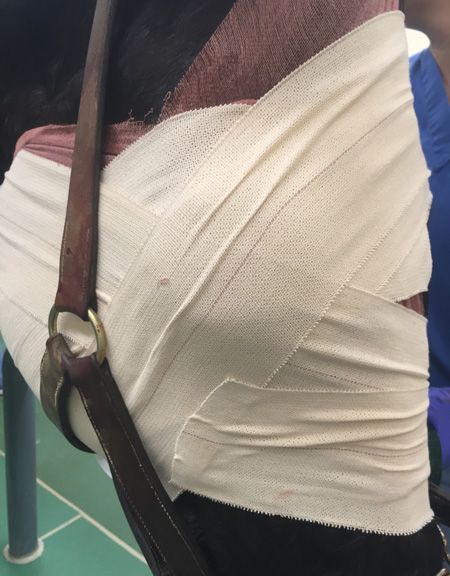
Figure 4. Final appearance with head bandage using brown gauze and elastic adhesive bandage material. (Photo courtesy of Dr. Nikki Scherrer, Unversity of Pennsylvania, New Bolton Center, Kennett Square, Pennsylvania.)After the procedure, the horse is generally treated with postoperative antimicrobials and non-steroidal anti-inflammatories. The duration of this treatment depends on the reason for enucleation.
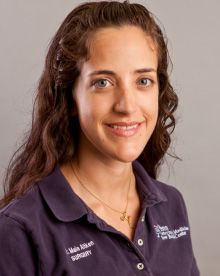
Dr. Maia R. Aitken is an ACVS board-certified large animal veterinary surgeon with the Emergency and Critical Care Service of the University of Pennsylvania's New Bolton Center in Kennett Square, Pennsylvania. Outside of the operating room, Dr. Aitken enjoys exploring the outdoors, both on horseback and on foot.
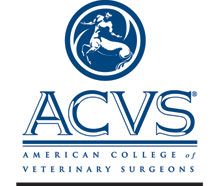
Surgery STAT is a collaborative column between the American College of Veterinary Surgeons (ACVS) and dvm360 magazine. To locate a diplomate, visit ACVS's online directory, which includes practice setting, species emphasis and research interests, at acvs.org.